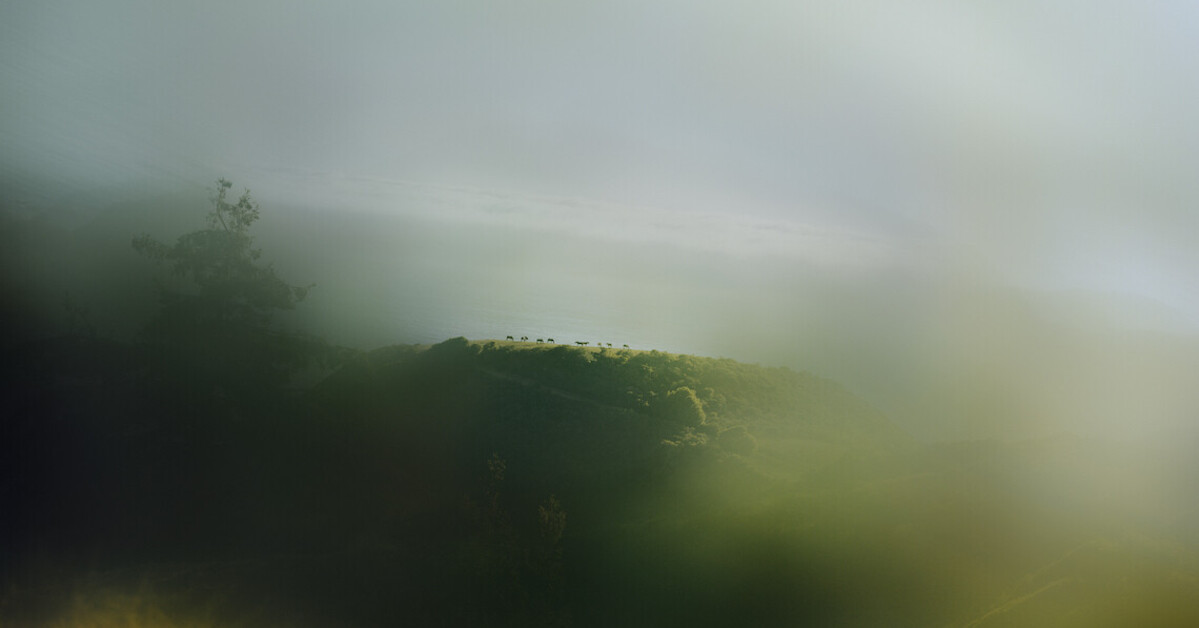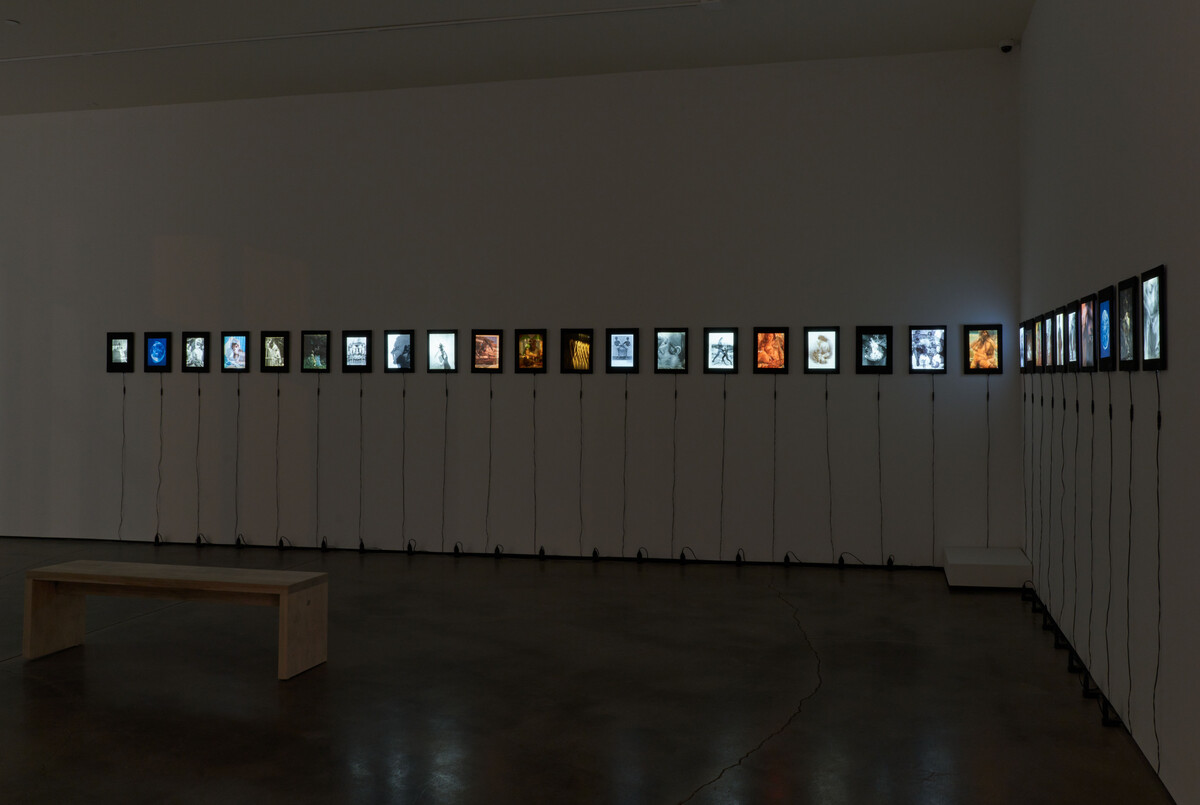
The Sun, Trying to Disappear is a show that speaks of entanglement. The images in this exhibition flutter between icons and mistrusted memories; dumpster-found advertisements; and miracles of moments that feel fully divine. As we all wade through systems that try to engulf us, the six featured artists use their imaginations as a way to survive above the flames. They may be above them, but they’re looking directly at them.
The sun – as the source of the world’s shadows – is what gives these six artists their relentless curiosity. If falsehoods are illuminated, can we more clearly see the systems that we live under? Each of these photographers creates work that references histories of utopia, futurism, landscape, and defiance specific to their own community. Adjacent to the systems of destruction that they photograph – natural disasters, the melting of late-stage capitalism, the forced control of bodies, or haunted landscapes – the artists reveal flickering candle-lit gasps of staggering beauty. They do not address the world with hope-based sermons communicated through imagery but rely on alternative phenomenology, fiction, self, and wonder as modes of transcendence to extend past oppression. Spaces and characters that we recognize are made visible to us at a glance before we are dragged deeper into the specificity of the artist’s worlds. We may be reading one story, but they may be telling another one.
Image-making necessarily cannot be of the inside. The process of seeing weaves together the physiological, the genetic, and, perhaps most importantly, the memetic (relating to memes). The artists represented in The Sun, Trying to Disappear do not endeavor to impose iconography onto matter, but act to uncover the invisible. We cannot fully see the systems that we move through, but the stories in this exhibition allow us to gently lift the curtain so we can peer in at them from the outside.
The sun can never see the shadows that it casts, but we can.
Dylan Hausthor, Guest Curator

